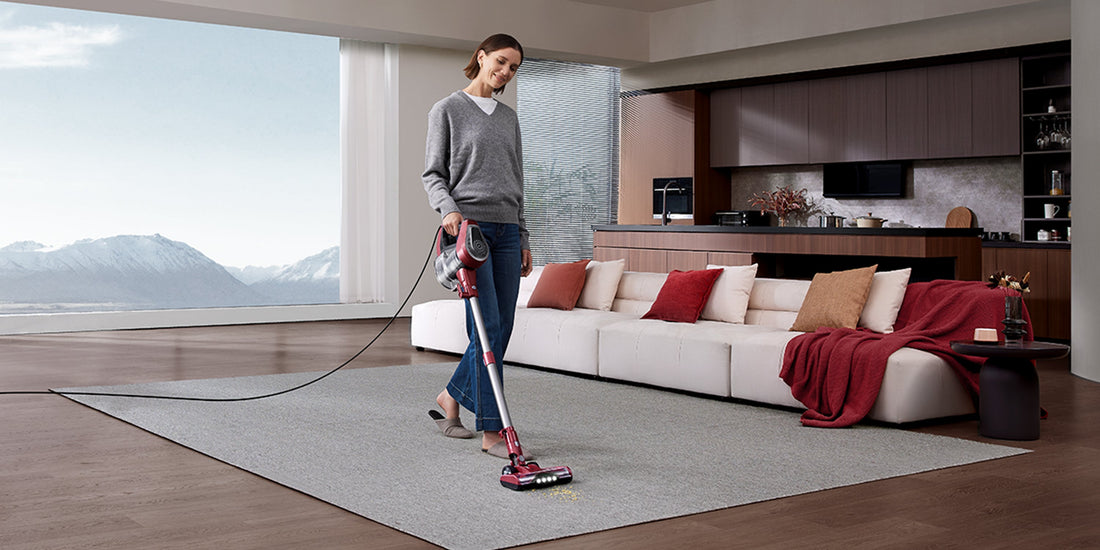We’ve all been there. You finally muster the motivation to tackle the living room rug, you switch on the vacuum, and… ugh. That high-pitched, grating whir instantly sets your nerves on edge. Within minutes, you’re rushing through the chore just to make the noise stop.
But have you ever stopped to wonder why the sound of one vacuum is a mild hum while another feels like a sonic assault? It turns out, it’s not just about volume. The science of sound reveals that some noises are simply engineered to be more irritating than others. Let's tune in and find out why.
It's Not Just Volume: The Frequency of Annoyance
When we talk about how loud a vacuum is, we measure it in decibels (dB). But this only tells half the story. The real secret to whether a sound annoys us lies in its pitch or frequency, measured in Hertz (Hz).
-
High-Frequency Sounds (The "Screech"): Think nails on a chalkboard. Sounds in the higher frequency range (2,000 - 5,000 Hz and above) are often perceived as harsh, sharp, and irritating. Many traditional vacuum motors, especially older or poorly insulated ones, produce a dominant whine in this range. Our ears are particularly sensitive to these frequencies, and they are notoriously difficult to ignore.
-
Low-Frequency Sounds (The "Rumble"): Lower-pitched sounds (under 500 Hz) are often experienced as a rumble. While they can be felt more than heard, they are generally less abrasive to the human ear than their high-pitched counterparts. A well-designed motor will have a deeper, more contained tone.
An annoying vacuum doesn't just have a high-pitched motor; it often lacks proper insulation to dampen that piercing sound, allowing it to escape directly into your ears.
The Hidden Offender: Unbalanced Components and Vibration
The motor isn't the only culprit. Often, the most irritating sounds are created by other components:
-
The Whistling Hose: A small leak or an imperfect seal in the hose or an attachment can create a high-pitched whistling sound as air rushes through—a surefire way to ramp up the annoyance factor.
-
The Rattling Brush Roll: A brush roll clogged with hair and debris becomes unbalanced. This doesn't just reduce cleaning efficiency; it creates a loud, irregular rattling and vibration that is acoustically chaotic and stressful.
-
Loose Parts: Any loose plastic housing or part can vibrate at high speed, creating a distracting buzzing or chattering noise.
The Quest for a Pleasant Sound: How Better Design Creates Acoustic Comfort
So, how do you engineer a more pleasant vacuuming experience? It’s not about creating silence—it’s about creating a less offensive sound profile. This field is known as sound design or acoustic engineering.
-
Pitch Perfect: Engineers work to lower the dominant pitch of the motor, shifting it from an irritating whine to a more acceptable, deeper hum. This involves meticulous motor design and improved bearings.
-
Material Science: Strategic use of sound-dampening materials inside the vacuum's body absorbs high-frequency noises before they can escape. It’s like putting a acoustic foam in a recording studio—it traps the bad sounds.
-
Precision Engineering: Ensuring all components are perfectly balanced and tightly sealed eliminates the chaotic noises of vibration, rattling, and whistling. What’s left is a smoother, more consistent, and predictable sound.
The goal is a sound that is not necessarily quietest, but one that is less perceptually annoying. A smoother, lower-pitched sound allows you to easily listen to music, a podcast, or have a conversation while you clean, transforming a jarring chore into a more peaceful experience.
Clean in Peace: When Sound Design Meets Performance
At Vactidy, we believe a great cleaning experience engages all the senses—including your hearing. We see acoustic comfort not as a luxury, but as a fundamental part of thoughtful product design.
It’s a philosophy that goes hand-in-hand with performance. For example, our Vactidy Blitz V12 Cordless Vacuum Cleaner (also known as Vexilar V12 in the EU Market) is engineered for powerful cleaning with 48 kPa suction, but also for a more agreeable acoustic profile. Through careful motor design and internal engineering, we've worked to reduce the harsh, high-pitched frequencies that cause the most irritation.
This means you can focus on the clean, not the noise. And with a 50-minute battery life and multiple accessories for every scenario, you can comfortably clean your entire home without that overwhelming urge to just "get it over with." It’s designed to be a powerful tool that respects your peace and quiet.
Because a clean home shouldn’t come at the cost of your sanity.
Ready for a cleaner, quieter home?

